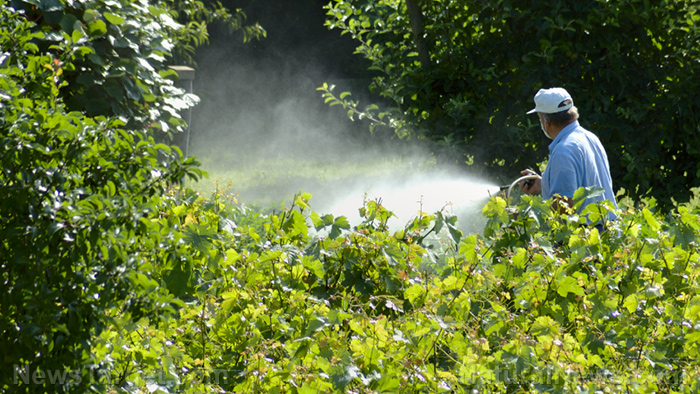Fish off the coast of Fukushima show high concentrations of radioactive cesium
03/10/2021 / By Divina Ramirez

For the first time since 2019, fish contaminated with high levels of radioactive cesium have been caught off the coast of the Fukushima Prefecture in Japan on Feb. 22, according to local public broadcaster NHK.
Laboratory tests revealed that black rockfish caught at a depth of 24 meters (m) nearly 8.8 kilometers (km) off the coastal town of Shinchi were contaminated with up to 500 becquerels (Bq) of radioactive cesium per kilogram. The permitted standard level is 100 Bq of radioactive cesium per kilogram.
Fishermen in affected coastal towns have since suspended fishing for the species, citing potential health issues. In addition, the Fukushima Prefectural Federation of Fisheries Cooperative Associations has also halted the distribution of black rockfish until local authorities can declare it safe to do so.
On Feb. 19, Tokyo Electric Power Co. (TEPCO) said cooling water levels have fallen in two reactors at the Fukushima Daiichi Nuclear Power Plant since a powerful earthquake hit the area over the weekend. The earthquake might have caused damage to the plant and caused water to leak.
In 2011, an earthquake had damaged the plant’s cooling system, causing three reactor cores to melt. Moreover, nuclear fuel fell to the bottom of its containment vessels. Since then, cooling water in the plant has been escaping from the damaged vessels into the basements of the buildings holding the reactors.
To make up for the loss, operators had tried to pump more cooling water into the reactors to cool the fuel. But the recent decline in cooling water levels would suggest that more water is leaking out than before.

A spokesman with TEPCO said the operator will monitor water and temperature levels at the bottom of the containment vessels. Local officials could use information from this surveillance to determine whether the leakage from the plant led to the irradiation of black rockfish in Fukushima.
Not the first time Japan has seen irradiated fish
The Fukushima power plant was disabled after the 2011 disaster. But the leakage from the plant led to roughly 320,000 gallons of radioactive water. This water is set to be released into the ocean based on the recommendation of the government’s advisory panel.
Since the plant was disabled, that water was used to cool the damaged reactors to prevent meltdowns. Officials had it stored in large tanks, but those are expected to be full by 2022.
If released, radiation in the sea off Fukushima might rise to dangerous levels and poison fish and other marine animals. Radiation levels in that area are already millions of times higher than permitted levels.
In fact, reports of irradiated fish being caught in Fukushima are not new. In October 2019, the Fukushima Prefectural Federation of Fisheries Cooperative Associations also voluntarily suspended seafood shipments after white perch were found to contain 53 Bq of radioactive cesium per kilogram. The permitted level is only 50 Bq of radioactive cesium per kilogram of white perch.
And in 2012, researchers from Stanford University in California and the State University of New York at Stony Brook found that tuna caught off the coast of San Diego carried radioactive cesium.
They studied the element to understand the origin and timing of the tuna’s migration across the Pacific Ocean. They traced the contamination to the Fukushima Daiichi power plant disaster. (Related: Fukushima: Radiation now reported in West Coast Tuna.)
The levels of radioactive cesium in the fish were not considered a threat to human health. But the study shows the extent of the impact of the disaster.
And with the Japanese government poised to release the radioactive water from the plant into the sea, experts might soon be faced with more irradiated tuna and other marine animals.
Go to Fukushima.news to read more about the environmental impact of radiation in Fukushima.
Sources include:
Tagged Under:





















